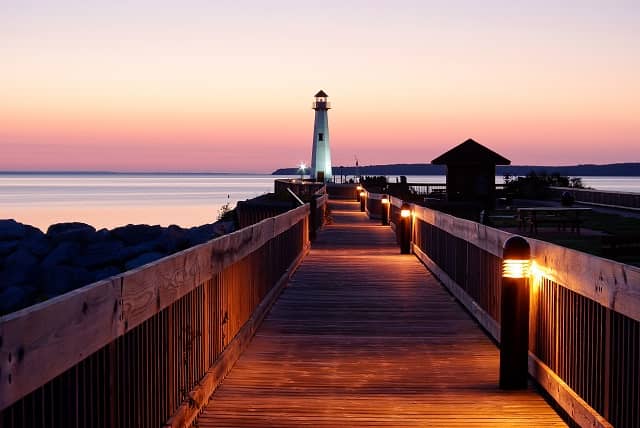
The city over the bridge is much more than just a gateway to Michigan’s Upper Peninsula and Mackinac Island. St. Ignace was established by Father Marquette in 1671, named for St. Ignatius of Loyola, which makes it the second-oldest city in Michigan founded by Europeans. Of course, Native Americans have resided in the area for thousands of years and their culture still shapes the region. Unsurprisingly, visiting St. Ignace offers a look into how the city was shaped, those who once inhabited it, and more. Here are 5 spots to discover the rich history of St. Ignace in Michigan’s U.P.!
Sign Up For Our Newsletter
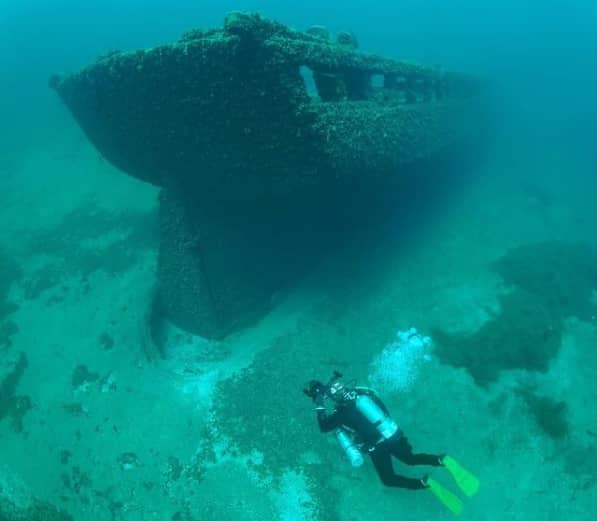
The waters that line the shores offer many wrecks that have yet to be discovered. Will you be the one who will discover them? Due to the fog, ice, rocky shoals, and wind, the waters of the Straits of Mackinac have caused a large number of shipwrecks over the last 150 years. St. Ignace is the place to check out those shipwrecks!
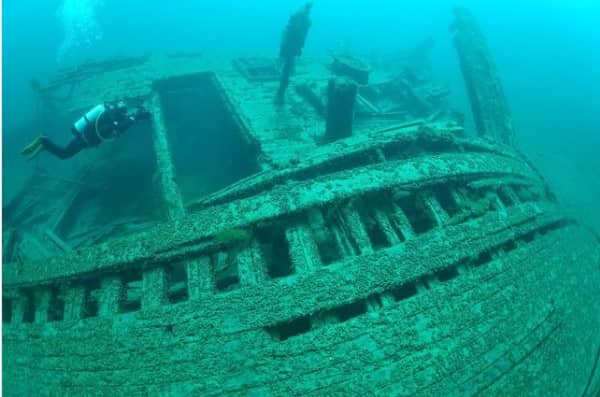
Do you prefer to get up close and personal with the shipwrecks? Straits Scuba Center is the place to go. However, If you’re not a fan of diving into the waters, check out these Glass-Bottom Boat Tours and see the shipwrecks from above! These tours visit two different shipwreck sites – making up a 2-hour tour. You’ll also get a look at the historical lighthouse in St. Ignace!
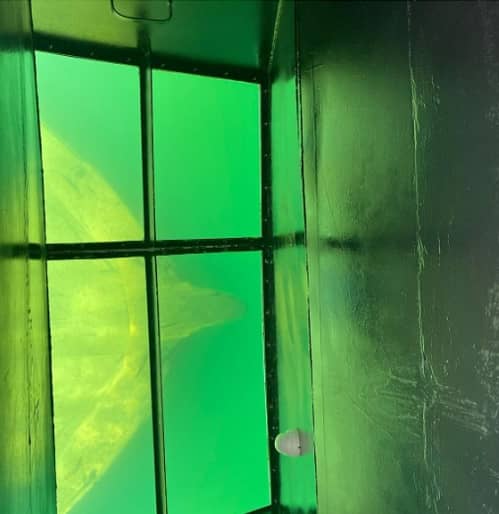
Don’t forget to visit the Great Lakes Shipwreck Museum for a unique way to discover a more in-depth look in the history of the shipwrecks of Lake Superior and the Straits of Mackinac. For more information check out this Guide to St. Ignace’s Shipwrecks.

The Wawatam Lighthouse is located at the end of the boardwalk in downtown St. Ignace. This lighthouse once was located in Monroe, Michigan! In 2004, the lighthouse was broken up and shipped up north in five different pieces. In 2006, the Wawatam Lighthouse received its final home on the boardwalk in downtown where it also received its latest make over. Here is where the lighthouse was first lit in August of that year and can be seen for over thirteen miles. While the lighthouse itself is newer, it has made history: it is one of the final working light towers to be erected in the waters of the United States.
The lighthouse is lit all year so ships can cruise in the dark hours of the summer nights and snowmobiles can navigate the frozen lake. Are you wondering how the name ‘Wawatam’ came about? Well through the mid-1980’s the railroad ferry named Chief Wawatam used the same dock where it now stands.
Visitors Guide
Order your St. Ignace Visitors Guide today or view online.
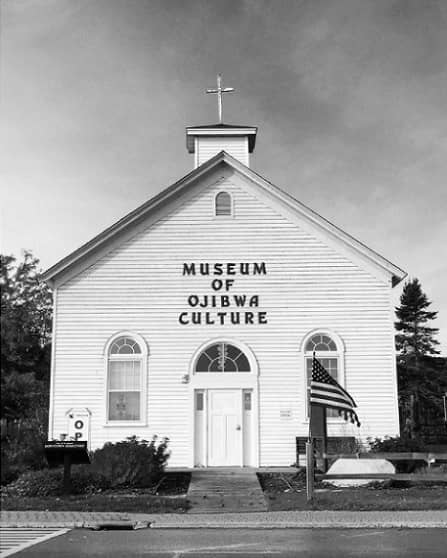
Have you ever wondered how Michigan’s Upper Peninsula was founded and who it was founded by? Look no further because the Museum of Ojibwa Culture has the answers. This museum offers a first-hand look into the culture of the tribes who once inhabited it. Visitors to the site will find region’s largest selection of handcrafted Native American art and crafts, from astounding sculptures to intricate beadwork.
However, there’s more to see. The museum is located next to Father Marquette’s gravesite, the founder of both Sault Ste. Marie and St. Ignace. You can learn more about the man who founded St. Ignace at the Father Marquette Memorial located in the Straits State Park. You can also visit the on-site Longhouse / Healing Lodge.

This isn’t your average rock formation. Castle Rock rises 195 feet about sea-level and is the ultimate lookout point to capture the best views of St. Ignace, the Straits of Mackinac, and Mackinac Island. The rock was once named “Pontiac’s Lookout” by the Ojibwa Tribe when they inhabited the area, making it one of the oldest lookout points near St. Ignace. Castle Rock was originally opened as a tourist attraction in 1929 and has since been a very popular tourist attraction.
Don’t forget to snap a photo with the historic Paul Bunyan and Babe, his Blue Ox, statues located at the bottom of the rock.

The Fort de Baude Museum is the Mackinac region’s premier historical museum. It houses the biggest collection of Native American and military artifacts such as weapons, trade items, arrowheads, and more! All artifacts come from the European to Native American period within the Great Lakes region that make up about 8,000 years of the rich history.
The museum is named after a French Fort in St. Ignace that was occupied by soldiers from 1683 to 1701. The outbreak of the Nine Years’ War between France and England saw Fort de Buade as an important staging ground. The French and their Native Americans allies used it to organize attacks against the Seneca, then allied with the English. In 1701, the now famous commandant of the fort, Cadillac, was replaced. If he hadn’t, the ambitious Cadillac might never have never gone on to construct a new fort on the north bank of the Detroit River — now the city Detroit. About 14 years later, Fort de Buade was abandoned, eventually crumbling, and the fort’s remains had not yet been found. When you visit, you might be the one to finally discover the ruins!
There are many ways to indulge in the history of St. Ignace, Michigan and learn how the area became what you see today. Feel free to request a visitor guide, sign-up for our newsletter, and book your stay today!
